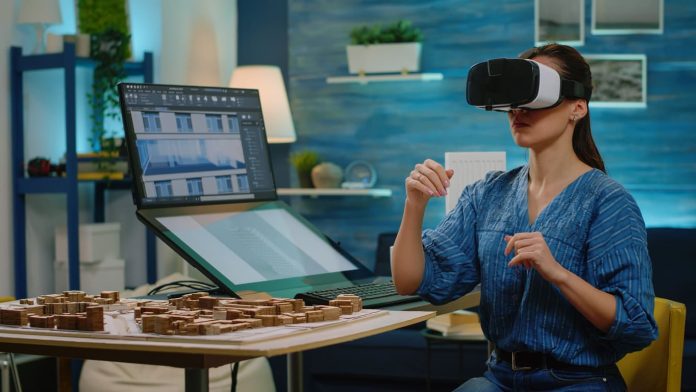Virtual reality (VR) technology is transforming many industries, including virtual building design. Architecture, engineering, and design professionals are finding new ways to leverage VR systems as these systems become more advanced and affordable. VR offers many benefits over traditional workflows in building design.
Benefits of Using VR
There are several key benefits that VR brings to the building design process:
Improved Design Process
Using VR leads to an improved design process with better visualization capabilities, enhanced collaboration between teams, and rapid prototyping of architectural scenarios.
Better Visualization
VR enables designers to truly visualize a space in scale and context at any stage in the design process. Spatial relationships and design flaws can be better recognized in an immersive virtual environment.
Enhanced Collaboration
By facilitating a more intuitive understanding of designs, VR allows better communication between architects, engineers, construction teams, stakeholders, and clients. It brings people onto the same page.
Rapid Prototyping
Virtual reality enables designers to quickly mock up architectural layouts and features to test different options at low cost. Designs can be experienced iteratively without having to model every scenario.
Cost Savings
Applying virtual building design leads to significant cost savings from reducing expenses related to physical prototyping and fixing design issues earlier:
Reduce Physical Prototyping
Because VR prototypes are much less expensive than mocking up spaces physically, project budgets associated with materials, construction, and storage can be reduced or reallocated.
Fix Issues Earlier
Identifying design flaws while they are still easy to fix avoids costly rework that typically increases exponentially later in construction. VR allows adoption earlier.
Improved Building Performance
Using VR also translates into better building performance qualities related to sustainability and spatial layout:
Test Sustainability Features
VR enables designers to simulate and evaluate the performance of passive and active sustainability strategies like solar gain, natural ventilation, and lighting conditions.
Optimized Spatial Layout
Evaluating circulation, wayfinding, and spatial adjacencies is enhanced in an immersive VR environment, leading to improved building layouts and utilization of spaces.
Best Practices for Using VR
Following best practices will help overcome challenges and maximize value:
Choose the Right Hardware
Prioritize quality, comfort, and reliability when selecting VR equipment. Consider modular solutions that provide flexibility as technology progresses.
Provide Training
Make VR hardware and software training available to architects, engineers, and other users to lower the learning curve and build capability. Appoint internal experts.
Start Small and Scale Up
Introduce VR with a pilot project first before scaling across an entire firm. Learn workflows, then expand methodically while gathering feedback.
Conclusion
Virtual reality delivers game-changing benefits to the building design process – from improved visualization and collaboration to cost and performance optimization. As the supporting technologies mature and become more accessible, VR will rapidly grow as a standard practice.
Architects, engineers, and contractors who embrace it early will gain tremendous competitive advantage. This emerging virtual building design technology has enormous potential to revolutionize the AEC industry.





































